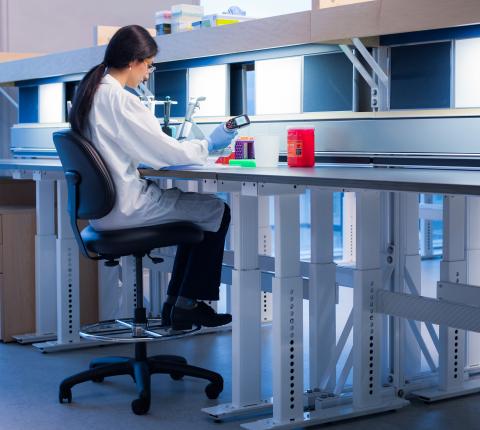Pipetting and standing
MSI risks

- Workbench positioned too low: results in bending
- Legs, feet and back can become tired with static and sustained standing
Improved ergonomics

- Use anti-fatigue mat for sustained standing
- Ergonomics could be further improved by raising the workbench
- Take micro-breaks: move and stretch
Pipettes provided courtesy of ThermoFisher. Wells and anti-fatigue mat provided courtesy of VWR International.











